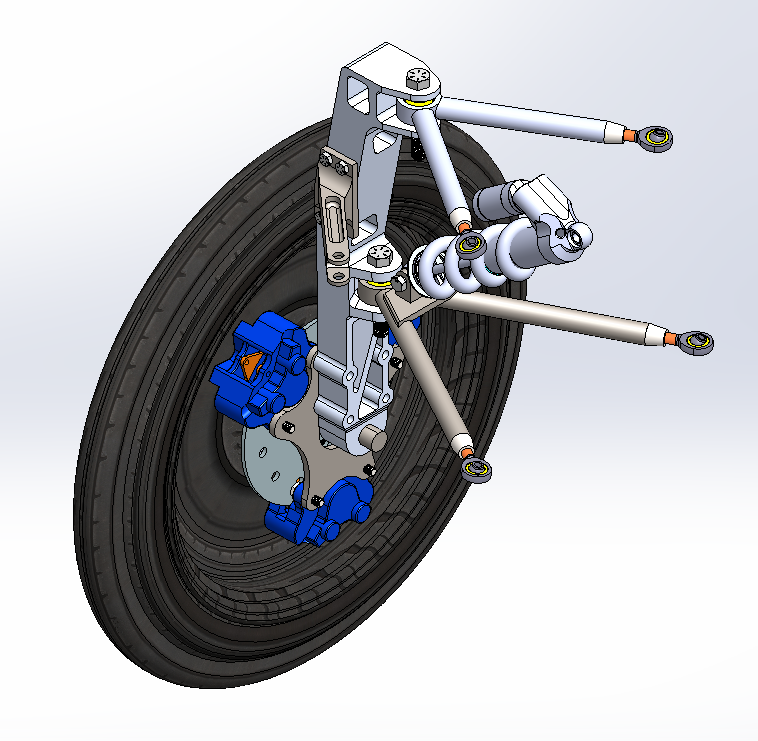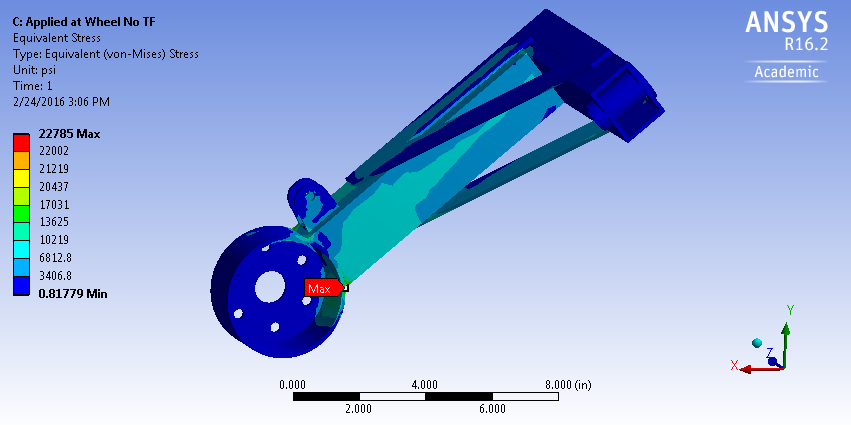Background
When: June - Nov 2015Where: Evanston, IL
I led the design of a solar electric vehicle suspension as part of the team creating a design for the seventh Northwestern University Solar Car (Project Seven). This was a unique challenge for me because I had no previous knowledge or experience of suspension design, and I didn't have any record of tools that the solar car team had used in the past to aid in the design process.
I had to immerse myself in the world and language of suspension design for suspension design for standard automobiles, and then synthesize that knowledge and combine it with what I learned from talking with other solar car teams and from our team's previous suspension designs in order to create a suspension for the new vehicle which performed efficiently and was simple to manufacture and assemble.

At the very start of the project, I decided to employ a trial-and-error approach to optimizing the standard suspension parameters such as scrub, camber, stroke length, bump steer, and so on, rather than focusing on optimizing only one or two of these variables. In order to ensure the design process was fast, I developed an adjustable 2D model of the suspension using GeoGebra -- a computer geometry program. This allowed me to visualize and measure many different suspension parameters all at once. More importantly, however, it allowed me to "play" with the design, thereby gaining a more intuitive understanding of how various changes to inputs would affect its efficiency and performance.
After the initial geometry of the suspension was determined, the forces on each component were calculated using in a big Excel spreadsheet. Solid models were created and analyzed under the influence of these forces using FEA analysis.


Some of the parts were manufactured in-house on Haas CNC machines, while others were outsourced to local companies who were able to complete the work cheaper and faster. To do this, it was necessary to create professional-quality drawings of each component and tolerance it appropriately using GD&T standards. Welding of components like the a-arms was accomplished by various team members including myself.